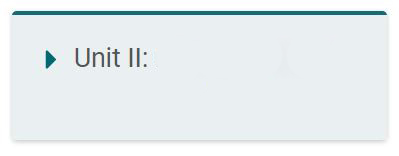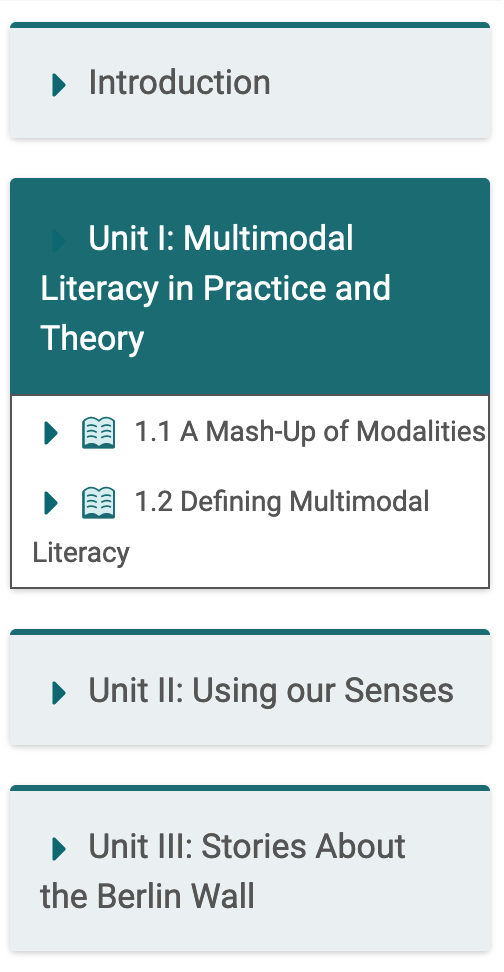Instructions
|
This page provides basic instructions for navigating through the course. It also clarifies the different types of teaching content.
|
Navigating through the course
|
 |
Units: Courses consist of three to five units that cover diverse areas of the course theme. You can navigate through the units by using the navigation bar on the left. Clicking on the small green arrow next to the unit lets you expand the unit content. You can then see how many Lessons the unit consists of and what kind of teaching content is offered. This may include textual narratives, embedded multimedia, interactive content, quizzes, and PowerPoint presentations with a voice-over.
|
Different types of teaching content
|
 |
Lessons: A Unit is subdivided in various Lessons, that can contain multiple pages covering different topics of the theme. These may include textual narratives, embedded multimedia, interactive content, quizzes, explanatory videos with voice-overs and step by step tutorials. Their function is to provide a solid grounding in methods and theories, whereas case studies and scenarios are meant to combine theory and practice and to enable learners to apply the acquired knowledge into different contexts.
|
 |
Pages: A Lesson consists of several Pages. These are short sections covering a specific topic that may include a combination of textual narratives, embedded multimedia, interactive content, quizzes, and PowerPoint presentations with voice-over.
|
 |
Interactive Content: Interactive content is designed to present the course content in more engaging ways or test your knowledge after completing a page or a lesson. Interactive elements may range from image sliders and flip cards to hot spots and timelines.
|
 |
Case Studies: Case Studies provide detailed descriptions of real-world situations with accompanying data to be used to take a decision and/or solve a problem. It is meant as a starting point for learners to delve into particular theories and/or methods.
|
 |
Exercises: Exercises are meant to help learners reflect and think through acquired knowledge on the lesson's topic. These mostly consist of interactive elements, such as drag and drop or false or true quizzes, but can also be prompts to reflect on a video, text, or image. They often have automated answers as they are specifically designed for independent learners.
|
Last modified: Thursday, 1 July 2021, 11:45 AM


